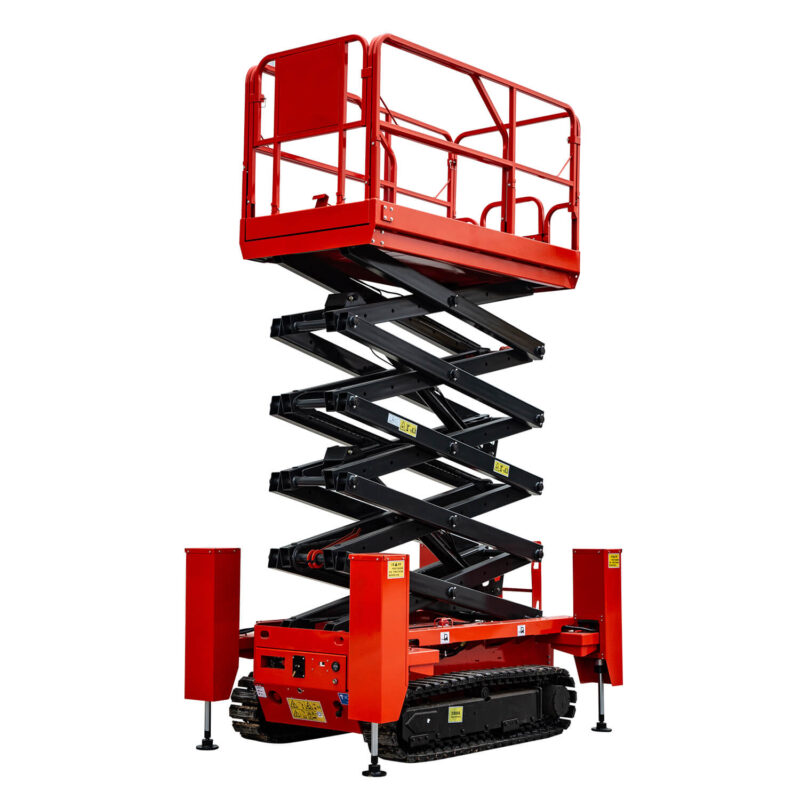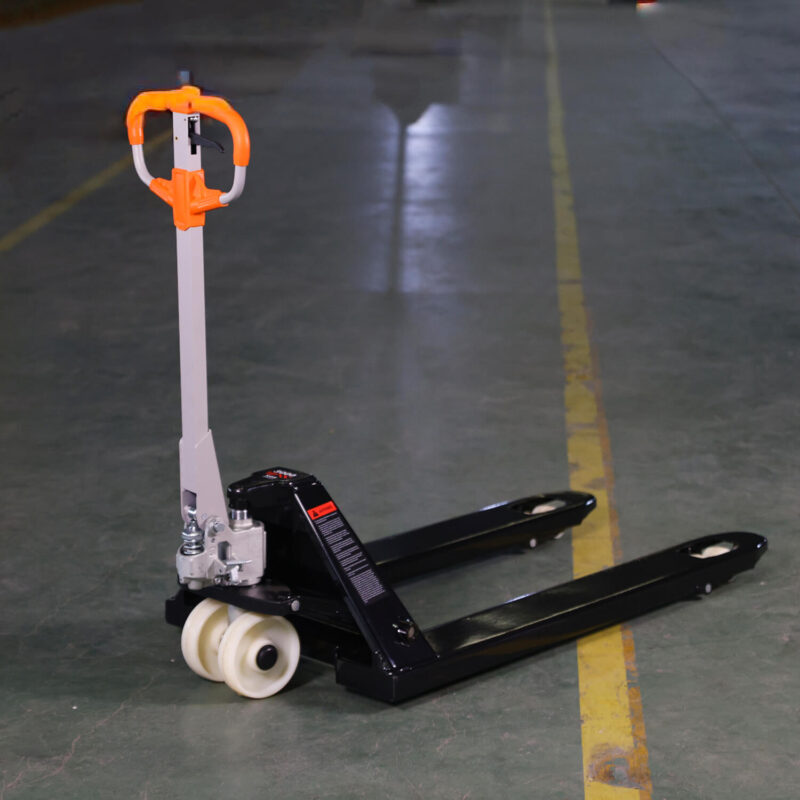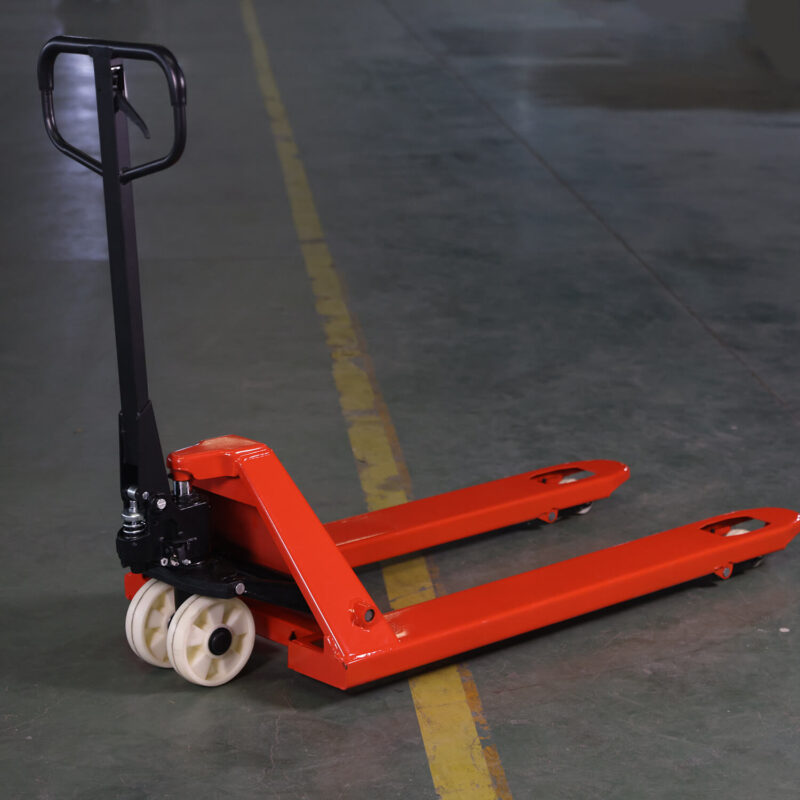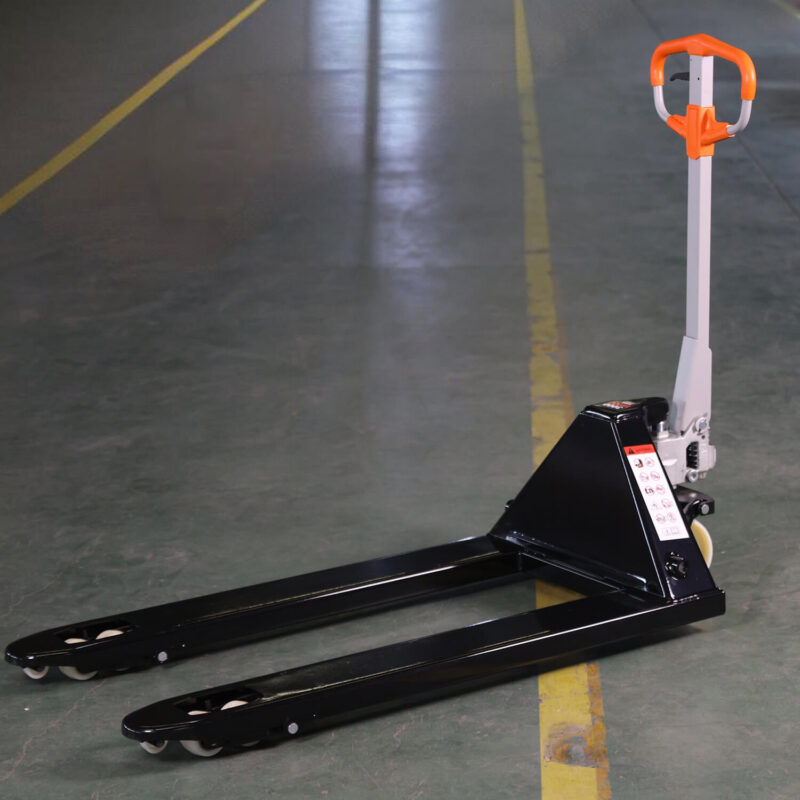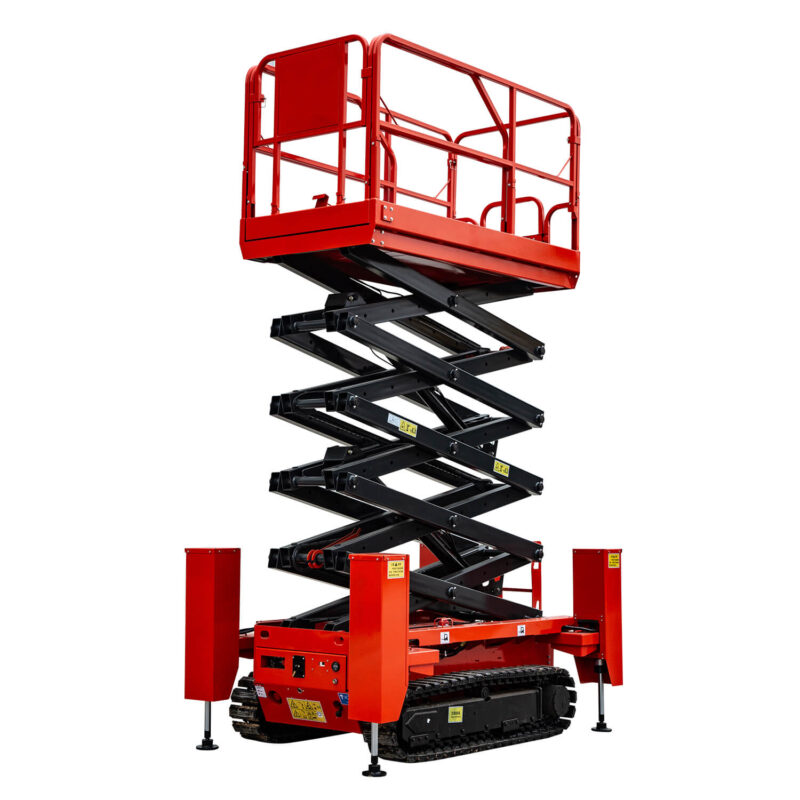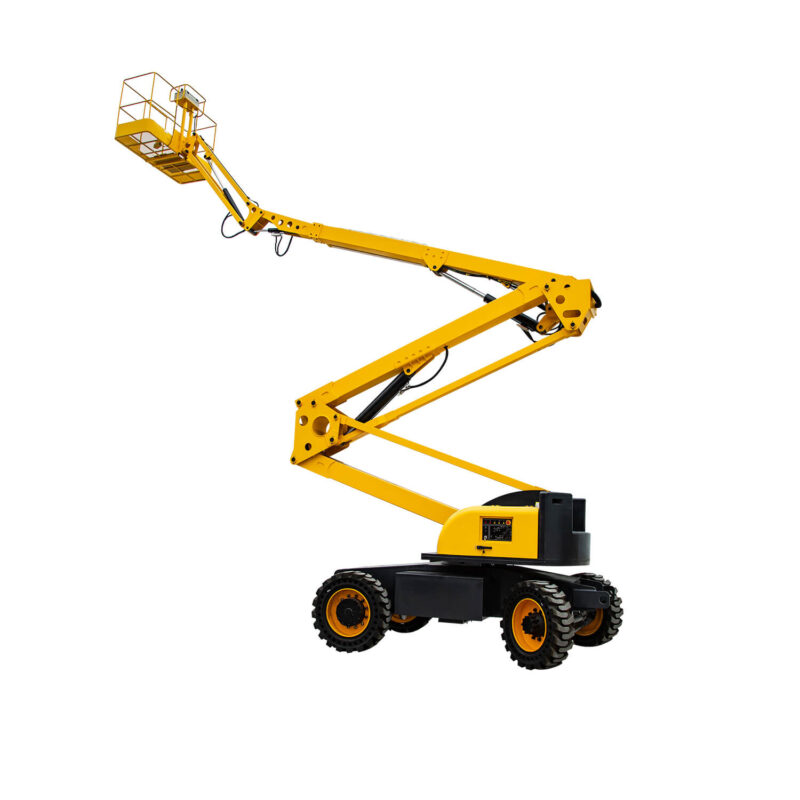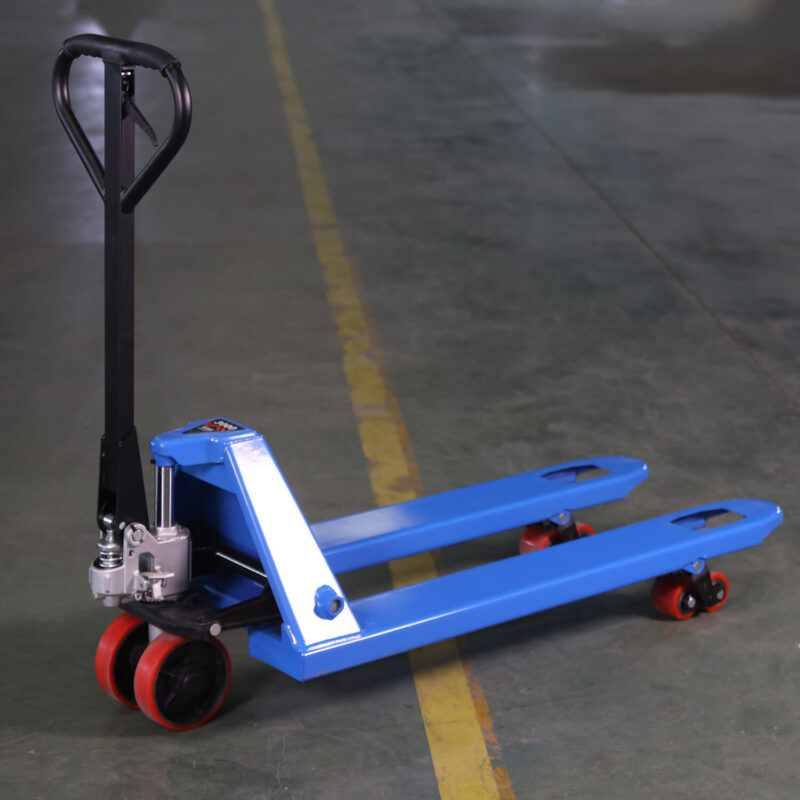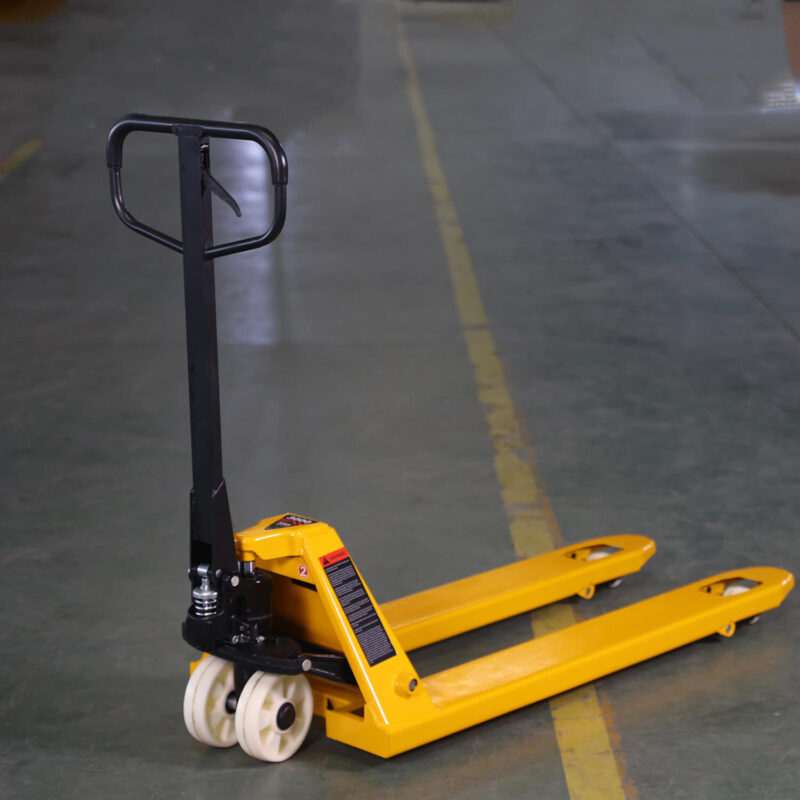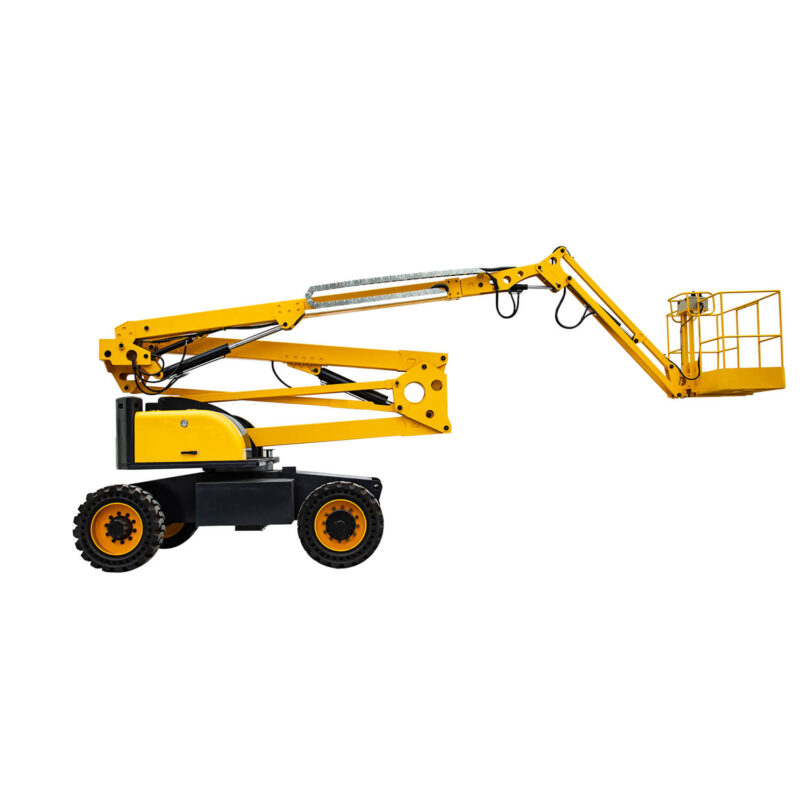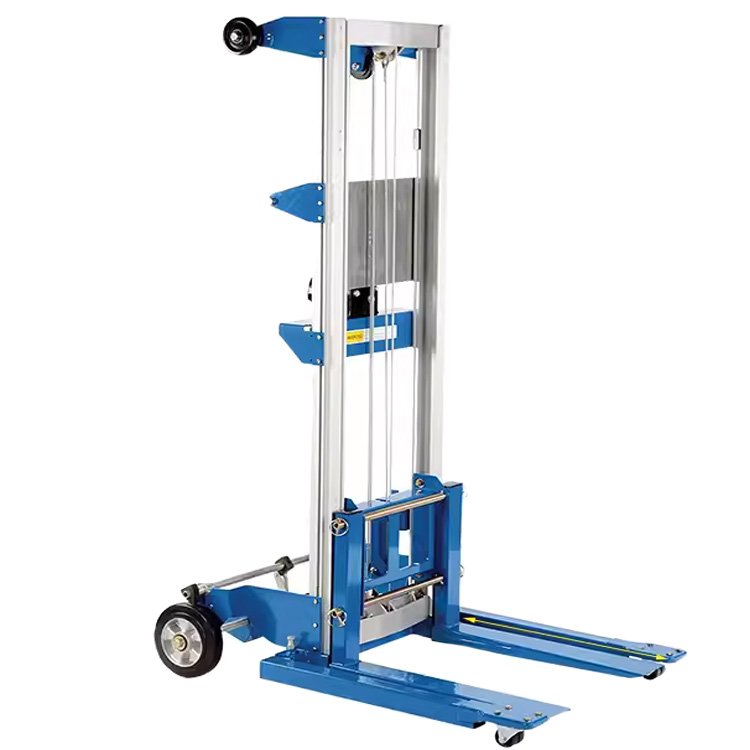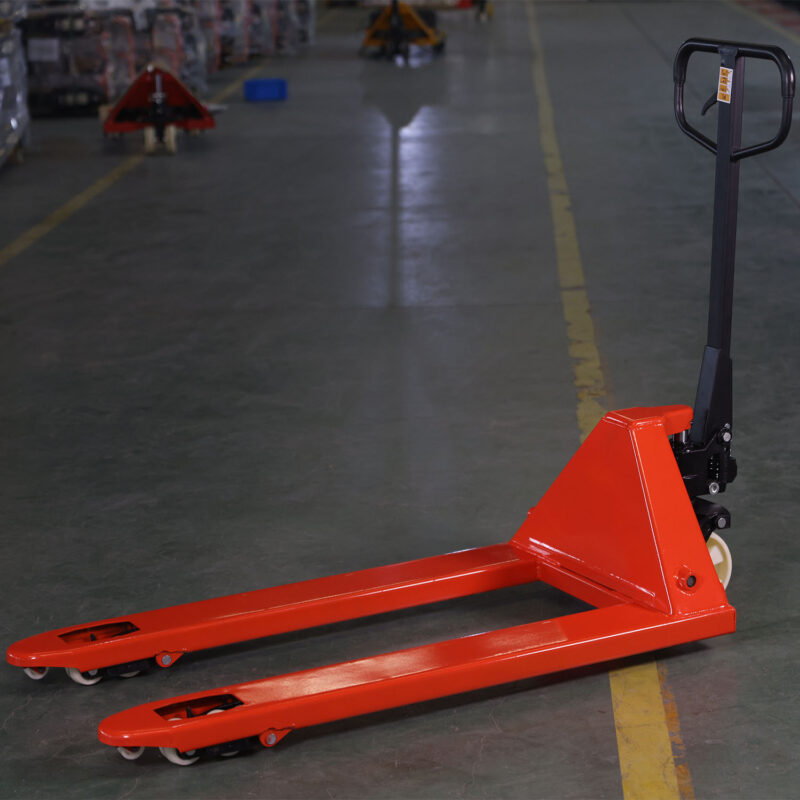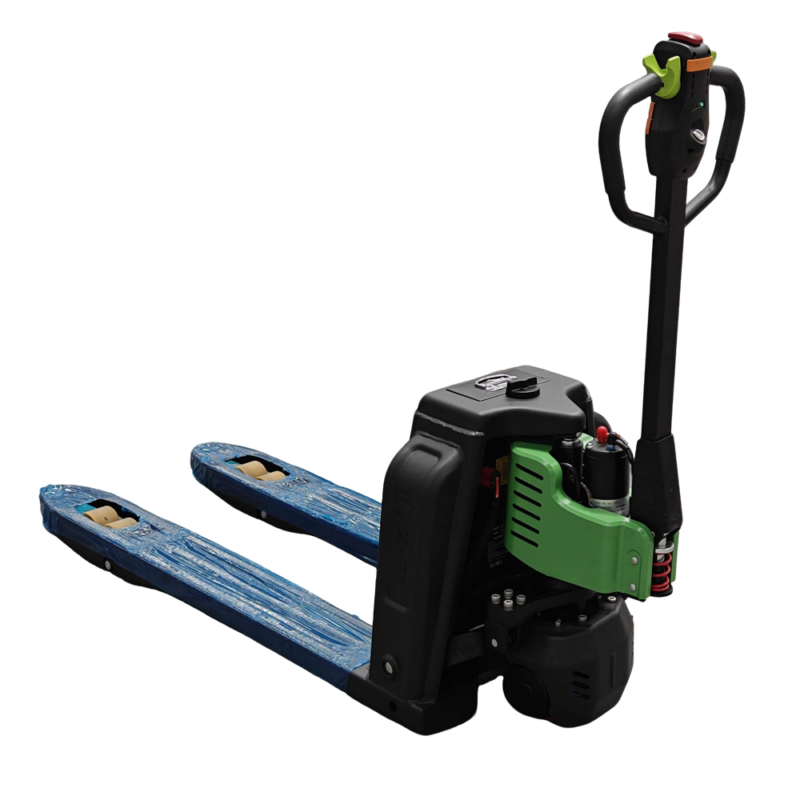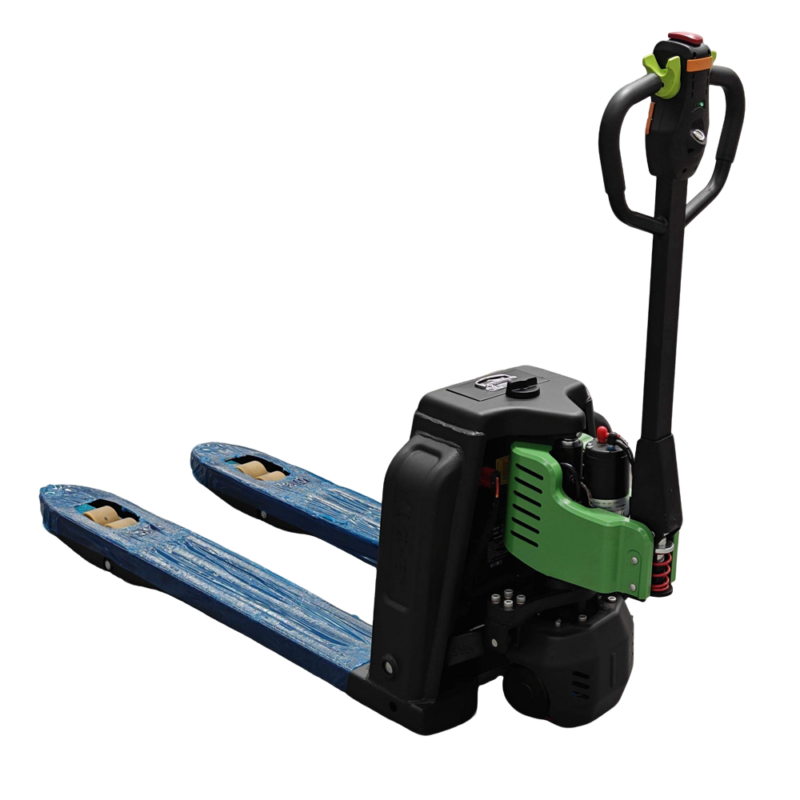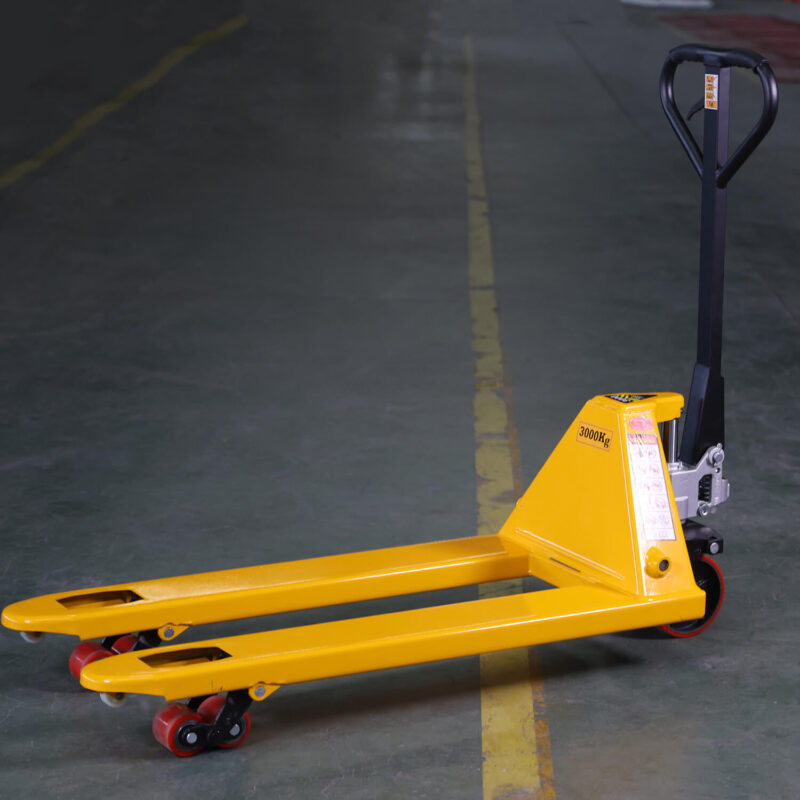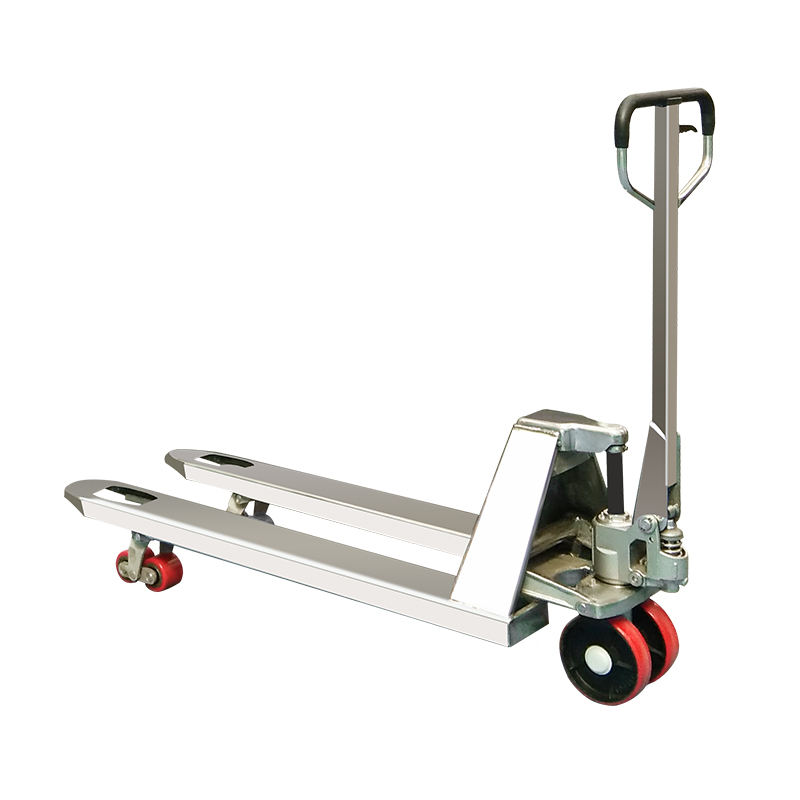The production of all-steel manual hydraulic pallet truck follows a rigorous, multi-step process to ensure structural integrity and long-term performance:
Raw Material Selection
High-strength low-alloy (HSLA) steel is the primary material for this pallet truck, chosen for its excellent blend of toughness, corrosion resistance, and load-bearing ability. Specific grades (e.g., S355JR or A36 steel) are selected for critical parts: the pallet truck’s forks and frame use thicker steel plates (8–12mm) to resist bending, while the hydraulic cylinder housing relies on seamless steel tubes to withstand high hydraulic pressure
Key Component Fabrication
For the pallet truck’s forks, steel plates are cut into precise shapes using plasma cutting or laser cutting, then bent into the characteristic “L-shape” via hydraulic presses. The fork tips are tapered and reinforced with extra steel to easily slide under pallets without deformation— a key feature that ensures the pallet truck operates efficiently.
Assembly and Quality Inspection
Components of the pallet truck are assembled in a sequential manner: wheels (often with steel hubs and polyurethane tires) are attached to the frame, the hydraulic cylinder is mounted between the forks and the handle, and the manual pump lever is connected to the cylinder.
The all-steel manual hydraulic pallet truck excels in environments where durability and heavy-load capability are non-negotiable. Common use cases for this pallet truck include:
Steel Warehouses and Distribution Centers
When storing or shipping steel products (e.g., steel bars, wire coils, or metal sheets), the pallet truck’s high load capacity ensures safe transport of heavy pallets. This pallet truck also performs well in cold storage areas (down to -20°C) because steel does not become brittle in low temperatures, unlike some plastic components in other pallet trucks
Manufacturing and Construction Sites
On construction sites, this is moves building materials like concrete blocks, steel beams, or roofing sheets. In manufacturing plants (e.g., automotive or appliance production), the pallet truck transports heavy work-in-progress components between assembly lines—its compact design allows this pallet truck to operate in narrow spaces where forklifts cannot fit.
Compared to non-steel or mixed-material pallet trucks, the all-steel manual hydraulic pallet truck offers distinct benefits:
Superior Load-Bearing Capacity
This pallet truck’s all-steel structure supports significantly heavier loads (2–10 tons) than aluminum pallet trucks (typically 1–3 tons) or plastic-jacketed pallet trucks (under 2 tons). This makes the all-steel pallet truck the top choice for industries dealing with dense, heavy cargo.
Exceptional Durability
Steel’s resistance to wear, impact, and corrosion (especially with protective coatings) ensures the pallet truck maintains performance over time. Unlike plastic parts that can crack or aluminum parts that bend, the steel components of this pallet truck keep their shape and function even after years of heavy use. Most all-steel pallet trucks have a service life of 8–12 years, compared to 3–5 years for non-steel pallet trucks.

